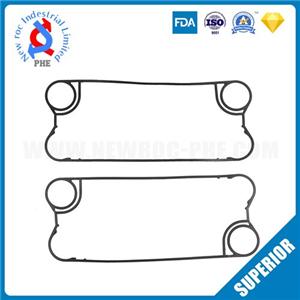Common installation of plate heat exchanger
It is no stranger to plate heat exchanger gaskets. But the installation method may not be so familiar. Today we will talk about the three common installation methods of plate heat exchanger gaskets. We hope that we can help you in the use and maintenance of plate heat exchangers.
According to the installation method, the gasket of the plate heat exchanger can be divided into three types:
1. Apply glue to the heat exchanger gasket groove of the heat exchanger plate, and install the heat exchanger gasket into the groove.
2. Insert rubber nails, that is, design mounting holes on the heat exchange plate, and design rubber nails on the gasket of the heat exchanger. After putting the gasket of the heat exchanger into the mounting groove of the plate of the heat exchanger, insert the rubber nail into the mounting hole.
3. The type with clip is designed to have a clip on the outside of the heat exchanger gasket, and the heat exchanger gasket is fixed to the heat exchange plate through a clip.
For different applications, the expression of the plates of the plate heat exchanger is different. Just as users hope to obtain higher heat exchange efficiency, the commonly used joints will be in the form of diagonal flow; if you want to save costs, you will use a single-sided flow shape, etc., let us take a closer look at the differences in the plates of the plate heat exchanger The specific performance of the occasion. According to the flow pattern of the heat exchange medium, the plates of the plate heat exchanger are divided into single-sided flow and oblique flow. Therefore, the plates of the plate heat exchanger are divided into single-sided flow and oblique flow according to the flow pattern of the heat exchange medium.
The single-sided flow of the plates of the plate heat exchanger means that the heat exchange medium flowing out of the hole in the right corner of the heat exchanger plate exits through the hole in the right corner. Oblique flow means that the heat transfer fluid flows out from the hole in the right corner and then from the hole in the left corner, or the fluid from the hole in the left corner flows out from the hole in the right corner, and gives an oblique flow pattern. In terms of heat transfer efficiency, the diagonal flow mode is better than the single-sided flow, but the cost of the single-sided flow method is relatively low. Therefore, the single-sided flow is generally used for heat exchange when the efficiency is met.




